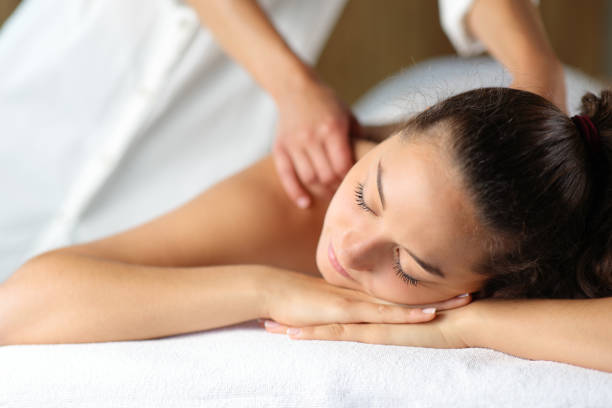Remedial massage is a hands-on therapy that treats damaged muscles. It’s especially useful for soft tissue injuries and can reduce pain and improve flexibility.
The techniques used in remedial massage help the body relax, lowering muscle tone and decreasing tension. They also stimulate the brain to release feel-good hormones, increasing feelings of well-being.

Relieves Pain
Massage Pascoe Vale focuses on breaking down adhesions (fibrous tissue that builds up in soft tissues due to trauma, injury and overuse). A remedial massage therapist uses deeper massage techniques to break down these adhesions which alleviate pain, rehydrates the tissues and encourages the release of feel good hormones. This enhances feelings of calmness, contentment and happiness.
Many people suffer from headaches and migraines that are caused by tension in the head, neck and shoulders. Remedial massage focuses on these problem areas and relieves the tension that is causing the headaches and migraines. It also identifies any muscle weakness that may be contributing to the pain and treats it accordingly.
Another way that remedial massage helps reduce pain is by relieving trigger points. Trigger points are painful knots in the muscles that are usually felt as a twitch when touched. Remedial massage can help to release these trigger points by applying pressure to them until the twitch stops and the myofascial pain is reduced.
Remedial massage can also be used to improve flexibility and mobility in the body. This is done by using techniques such as PNF (proprioceptive neuromuscular facilitation) stretching which involves a therapist acting as your partner and helping to stretch the muscles in a series of contractions and holds. This technique helps to improve muscle flexibility and joint mobility and increases strength, stability and range of movement.
Reduces Stress
Having regular remedial massages decreases stress levels by relaxing the body and mind. Remedial massage also improves lymphatic drainage and boosts the body’s natural production of disease-fighting hormones. It’s been shown to stimulate natural killer cells, increase the number of lymphocytes and reduce the inflammatory response.
Unlike relaxation massage, remedial massage uses deeper techniques to target specific areas of the body that are tight, knotted or immobile. This is often used to treat a range of conditions including muscle strains, neck pain, back pain and sciatica, but it can also be used for sports injuries, arthritis and other chronic and acute ailments.
A remedial massage therapist will first ask about your general health and current symptoms. They will then observe your posture and run through a range of assessments to get a better understanding of the issue. This may include range of motion testing, functional tests and specialised orthopaedic assessment.
A good remedial massage therapist will use their knowledge of the body’s anatomy to identify any problem areas and then use a range of techniques including myofascial release, trigger point therapy and neuromuscular facilitation to ease these areas. This helps to break down adhesions and increases soft tissue elasticity, resulting in improved flexibility. It also helps to relieve tension and stiffness while promoting healing and improving strength, stability and mobility.

Increases Blood Circulation
In order for the body to distribute nutrients and oxygen to every cell, the circulatory system must be working well. Remedial massage uses techniques that stimulate the flow of blood and lymph throughout the body. The result is improved muscular flexibility and range of motion. It can also reduce pain and discomfort in the joints.
The first thing the therapist will do is ask questions about your health history and get a feel for how your body moves. They will then perform some orthopaedic and limb tests to assess your strength, movement, and any injuries or issues that might need to be addressed.
Remedial massage works by manipulating the soft tissue of the body to increase the body’s circulation. This is achieved through a technique called vasodilation whereby the therapist widens the body’s blood vessels to allow for easier flow.
As a result, the therapist will ease muscle tension that causes headaches and migraines. It can also help to release the stress hormones cortisol and adrenaline, resulting in an overall feeling of wellbeing.
Improved circulation also increases white blood cells in the body, heightening immunity by distributing them to the varying parts of the body. In addition, the reduced level of stress enables the mind to function better and therefore improves mental clarity and concentration. This will then lead to a reduction in stress-related illnesses, such as high blood pressure.
Increases Elasticity
Remedial massage stimulates the body’s circulatory system to improve blood flow which helps release tight and overworked muscles. As the muscle fibres relax they increase in elasticity, which reduces pain and tension.
The friction of remedial massage causes a warm sensation which encourages the skin to produce oil and lubricate itself, improving flexibility. This also aids in preventing dry skin and assists with the body’s natural healing process. Regular remedial massage can also help prevent recurring injuries.
In addition to easing pain, massage promotes the release of feel good hormones, including endorphins, reducing the production of cortisol which is associated with stress, anxiety and depression. Keeping the body in a relaxed and happy state is vital for overall health and well-being.
Remedial massage also aims to realign joints that have become misaligned, this can be the result of an injury or as a normal part of ageing. The improved mobility in the joints helps alleviate pain and prevents further damage by decreasing pressure on surrounding tissues.
The first part of your remedial massage will involve a health history, observation and some range of motion or joint tests. Your therapist will then perform the remedial massage treatment. Following your session your therapist will advise on exercises, stretches or other treatments to speed up the healing process and keep you feeling better for longer.